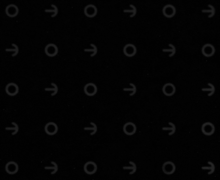Micropatterning

Micropatterning is the art of miniaturisation of patterns. Especially used for electronics, it has recently become a standard in biomaterials engineering and for fundamental research on cellular biology by mean of soft lithography. It generally uses photolithography methods but many techniques have been developed.[1]
In cellular biology, micropatterns can be used to control the geometry of adhesion and substrate rigidity. This tool helped scientists to discover how the environment influences processes such as the orientation of the cell division axis, organelle positioning , cytoskeleton rearrangement cell differentiation and directionality of cell migration.[2] [3] Micropatterns can be made on a wide range of substrates, from glass to polyacrylamide and Polydimethylsiloxane (PDMS). The polyacrylamide and PDMS in particular come into handy because they let scientists specifically regulate the stiffness of the substrate, and interestingly they allow researchers to measure cellular forces (traction force microscopy).
Aerosol micropatterning for biomaterials uses spray microscopic characteristics to obtain semi-random patterns particularly well adapted for biomaterials.
References
- ↑ Fink, J; Théry, M; Azioune, A; Dupont, R; Chatelain, F; Bornens, M; Piel, M (Jun 2007). "Comparative study and improvement of current cell micro-patterning techniques.". Lab Chip. 7 (6): 672–80. doi:10.1039/b618545b. PMID 17538708.
- ↑ "Experimental and theoretical study of mitotic spindle orientation". Nature. 447: 493–496. doi:10.1038/nature05786.
- ↑ Letort, G; Politi, AZ; Ennomani, H; Théry, M; Nedelec, F; Blanchoin, L (2015). "Geometrical and mechanical properties control actin filament organization". PLoS Comput. Biol. 11: e1004245. doi:10.1371/journal.pcbi.1004245. PMC 4446331
 . PMID 26016478.
. PMID 26016478.
External links
- Team of Matthieu Piel working a lot with micropatterns and inventing new techniques
- Website of Manuel Théry with numerous papers on micropatterning